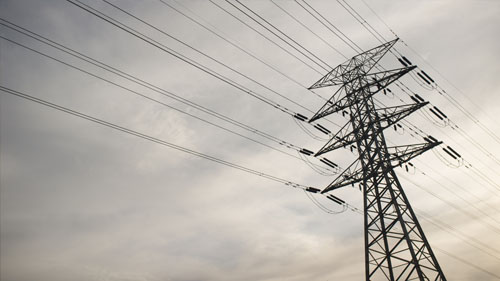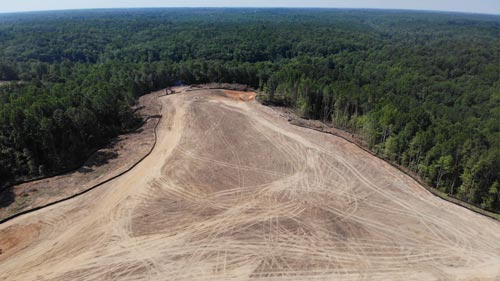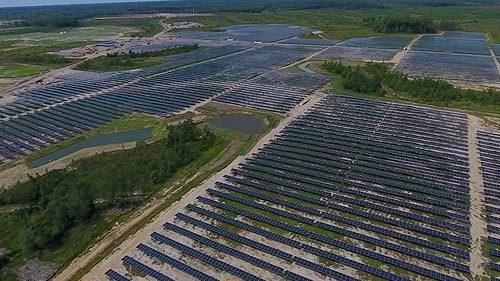> Landowners
All solar development is local
At Urban Grid, we pride ourselves on being transparent with our landowners and standing shoulder to shoulder with the community as our projects move from permitting through construction to ongoing operations. Every project is a unique situation, with different stakeholders and partners. For Urban Grid, we approach each project from this perspective – we don’t believe that successful development can take a cookie cutter approach. Success is measured by and dependent on the relationships and mutual understanding between all stakeholders.
Why Lease or Sell Your Land to Urban Grid?
We're headquartered in Virginia, home to one of the most ambitious clean energy policy agendas in the nation and to many Urban Grid team members. As one of the biggest project developers in the state, we care as deeply about our landowners and partners here at home as we do in each region where we are developing projects, whether in Texas, Kentucky or Pennsylvania.
We strive to create quality solar and storage projects that make good business sense for all involved.
- As our business partner, you can be assured you are receiving competitive solar farm lease or purchase rates.
- Be a part of bringing valuable tax revenue, jobs and economic growth to your local community.
- Leave a legacy that makes a positive impact for future generations.
- No work on your end is required, we do the work and take all the risk.
- If you don’t want to sell your land, a long-term lease can diversify your income.
- A long-term lease creates a future annuity for yourself and your children.
How Does the Solar Development Process Work?

Our site finding team considers these key characteristics when evaluating land for a renewable project.
- Access to electric utility infrastructure, such as a Utility substation or transmission line
- Land that is relatively flat
- Locations where utility-scale solar development will provide net gains to the local community
- Our expert team can work through development concerns around:
>Wetland or floodplain impacts
>Protected ecosystems and organisms
>Cultural or archaeological resources

When a site is deemed to be a quality location for a utility scale project, we will enter into an Option to Purchase or Option to Lease Agreement to secure the land.
During a 4-6 year Option Period, we commence the solar project development process investing significantly in analysis, feasibility studies, permitting and approvals. We work to build close partnerships with our landowners during the entire development process and in particular during this phase. Our landowners may continue to use their land as they wish during the Option Period, and are compensated throughout the tenure of the Option agreement.

Connecting to the power grid is one of the most critical, costly and difficult aspects of project development and crucial to a successful project. Once a site is under Option, our experienced team of interconnection engineers assess the target location and develop necessary applications to keep the project moving towards completion.

We dedicate significant resources to evaluating our project sites to ensure that development of a solar project will not negatively impact existing ecosystems, threatened and endangered species, and cultural and archaeological resources. Further, the soil conditions and topography are evaluated to ensure the site is suitable for the construction phase of a project.

The success of a utility-scale solar project hinges on a developers’ ability to navigate the local permitting process which requires a strong relationship with local government, as well as community business interests and residents. This phase entails time spent advancing a project through the local jurisdiction’s process for zoning approvals, or in some cases, working closely with the local government to develop and implement new zoning ordinances to address utility-scale solar. Additionally, many states require projects to complete a state-level approval as well.

From ground-breaking to final commissioning of the completed, operational plant, a solar project developer must deploy a stellar construction management crew and contract with tier 1 solar construction companies to construct on schedule a quality solar generating facility. The timeline to reach Commercial Operation Date (COD) and commissioning can be 10-16 months depending on project size.

Once a utility-scale solar project is placed in service, it requires very little in terms of operations and maintenance to continue efficiently producing clean, renewable energy. In most cases, a local company is used to cut the grass and some local technicians are hired to support the ongoing maintenance, troubleshoot and correct problems. Compared to other generation sources, the total cost and time invested in operations are very low, making solar one of the most efficient energy generation resources available.
Does this interest you?
OUR PATNERS
Landowners
Elected Officials
Community Members
Utility Planners
Business Leaders
Policy Makers

